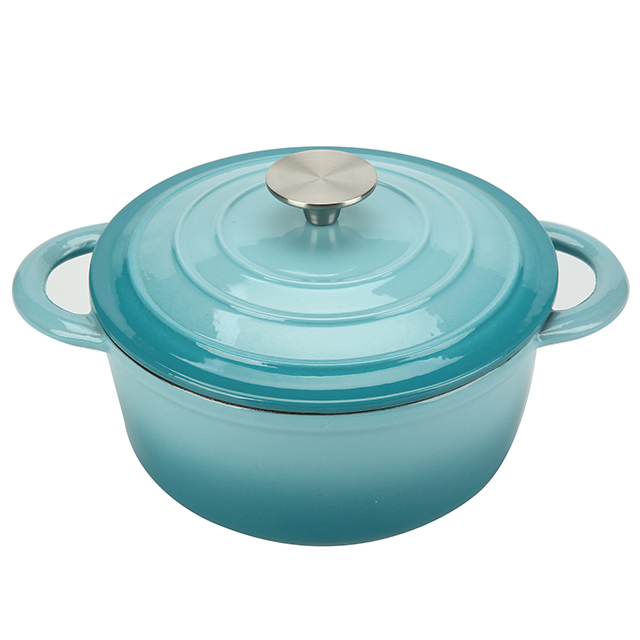Versatile Cast Iron Cookware for Every Kitchen Need and Culinary Adventure
The Timeless Appeal of Cast Iron Skillets and Pans
When it comes to cooking, few items in the kitchen hold the same level of reverence as cast iron skillets and pans. These sturdy, versatile cookware pieces have been cherished by cooks for centuries, transcending trends and evolving with the needs of home chefs. Whether you're an amateur home cook or a seasoned culinary expert, investing in a quality cast iron skillet can elevate your cooking experience and enhance the flavors of your meals.
The History of Cast Iron Cookware
Cast iron cookware has a rich history dating back to the Han Dynasty in China, around 220-280 AD. The technique of casting iron was further developed in Europe during the Middle Ages, leading to the creation of skillets and pans that are familiar to us today. Their durability and excellent heat retention made them a staple in kitchens around the world, from rustic cottages to haute cuisine establishments.
Why Choose Cast Iron?
1. Unmatched Heat Retention and Distribution One of the primary reasons chefs adore cast iron is its ability to maintain consistent heat. Unlike other materials, cast iron distributes heat evenly across its surface, ensuring that your food cooks uniformly, whether you're searing steak or preparing delicate pancakes.
2. Versatility Cast iron skillets and pans are incredibly versatile. They can be used on the stovetop, in the oven, or even over an open flame. This allows for various cooking techniques, such as frying, sautéing, baking, and braising. You can start a dish on the stovetop and finish it in the oven, all in the same pan.
3. Natural Non-Stick Surface With proper seasoning, cast iron provides a natural non-stick surface. This means you can cook with less oil and still achieve fantastic results. Seasoning involves coating the skillet with a thin layer of oil and heating it, creating a polymerized layer that offers both protection and non-stick characteristics.
cast iron skillets and pans

4. Durability and Longevity When cared for properly, cast iron skillets can last a lifetime, if not longer. Many families pass down their cast iron pans through generations, adding character and history to their kitchens. The more you use and season them, the better they get.
5. Health Benefits Cooking in cast iron can actually add trace amounts of iron to your food, which can be beneficial for those who are iron deficient. This naturally occurring mineral can help contribute to a balanced diet and improve your overall health.
Caring for Your Cast Iron Skillet
To ensure the longevity and performance of your cast iron skillet, it's essential to care for it properly. After each use, avoid soaking it in water. Instead, wipe it clean with a damp cloth or scrub it with a non-abrasive brush. For tougher residues, you can use a bit of coarse salt and oil to scrub the surface.
After cleaning, it's crucial to dry your skillet thoroughly to prevent rust. Apply a thin layer of vegetable oil or fat while it's still warm to maintain the seasoning and protect the surface. Store it in a dry place, and if possible, keep a paper towel between the skillet and the lid to allow for air circulation.
Conclusion
In an era of disposable cookware and non-stick appliances, cast iron skillets and pans stand as a testament to quality, tradition, and functionality in the culinary world. Their timeless appeal lies in their ability to deliver exceptional cooking results while being environmentally friendly and sustainable. Whether you're baking cornbread, frying chicken, or sautéing vegetables, a cast iron skillet is an essential addition to any kitchen. By investing in one, you're not just purchasing a cookware item; you're acquiring a piece of history that will serve you and your family for years to come. So, embrace the legacy of cast iron and unlock its potential to transform your everyday cooking into extraordinary culinary creations.
-
Why Every Kitchen Needs a Casserole Cast Iron DishNewsJun.24,2025
-
Experience the Tradition and Quality of Cast Iron CookwareNewsJun.24,2025
-
Double Sided Cast Iron Grill PanNewsJun.24,2025
-
Cast Iron Dutch Ovens You’ll Actually UseNewsJun.24,2025
-
Buy Cast Iron Griddle for Everyday CookingNewsJun.24,2025
-
Barbecue Iron Grill Cooking PowerNewsJun.24,2025
-
Standard Product Lines from Cast Iron Cookware SuppliersNewsJun.11,2025
